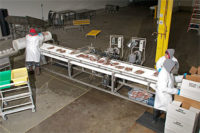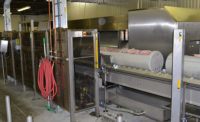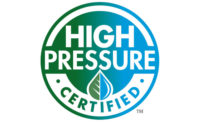In this video series, The National Provisioner editor-in-chief Andy Hanacek discusses trends in the industry with Jorge Izquierdo of PMMI. This episode focuses on high pressure processing (HPP) and how the industry is using it to push into new product development.
Andy Hanacek: We’re going to talk this time about high pressure processing. We’ve seen the rise of high pressure processing, HPP, and we know it’s affected a lot of things from processing on up through packaging and even product development obviously. What have you seen on the packaging side of the equation happen in response to the growth of HPP? We talked a little bit about flexible earlier. I know there are probably some changes there, but what else have you seen HPP kind of rear its head into and make packaging change in terms of the marketplace?
Jorge Izquierdo: First of all, HPP is not a new technology. It’s been there for a number of years, for decades. The difference is HPP has a cost. In general, it is more expensive, the processing on HPP, than other technologies. However, the benefits are significant. What’s different is that now the consumers are more willing to pay for those benefits, and among the key benefits is you can pretty much pasteurize a product without increasing the temperature. By not increasing the temperature, you keep the taste, the texture. You can actually take advantage of the process for tenderizing the meat products. The advantage of this is you get a more natural product. It’s fresher, tastes better. The texture is better, and that’s what consumers are looking for. In addition to this, it’s very interesting technology. It works pretty well with a mix of flexible packaging and some type of trays, but what is very, very innovative is you can mix different products. For example, you can have a dish, but you have a piece of meat, some rice—and it’s already cooked—some vegetables, and if you have the right mix of products, you can take them through the process and pasteurize them, and you have a unique product with great quality to offer to your customers.
Hanacek: That’s been really cool to see the product development. It’s been amazing, and [it’s] giving some of these processors an additional product development revenue stream. On the manufacturers side, thinking of whether it’s equipment or materials or converters or whoever, has HPP affected them in any way? If you have a guy who makes packaging machines, have you seen any influence there? Have they had to retool things to meet the needs?
Izquierdo: When you are using HPP, you need to sometimes redesign the packaging. The process of HPP… it’s basically applying a specific amount of pressure to a product that’s already in a container, so you need to make sure that the container is compatible with the process. Many times this implies the use of flexible packaging. Most of the times I guess. Or a mix of those. It’s important to be aware. Most of the times you rely on the experience of the manufacturer of the equipment. How they are applying this in other products and what they can do. In many cases, they can help you with the mix of products you want to pack with formulations sometimes. When you are talking about dressing or other products, you should consider working closely with the OEM.
Keep an eye out and watch the rest of The National Provisioner’s video series on trends in the industry with Jorge Izquierdo of PMMI.






Report Abusive Comment